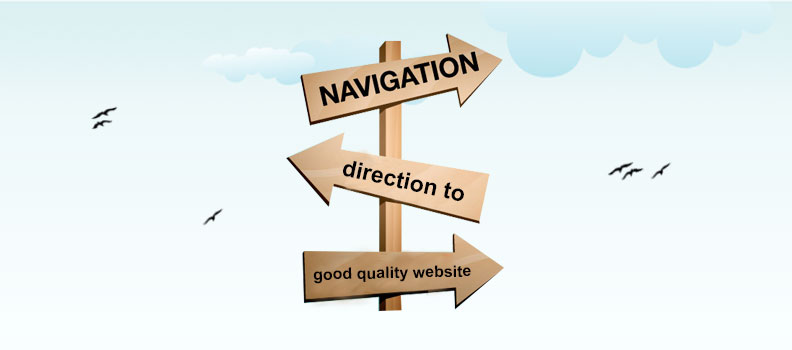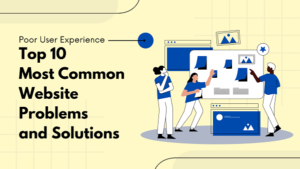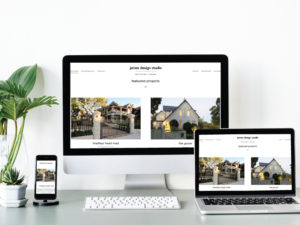You must have put a lot of effort to create a website with appealing images, engaging content, efficient services but what if the user is unable to discover any of these? Well, this can be an outcome of poor navigation. All your effort will go in vain, if your navigation not makes the grade. When you visit any new place, you refer to a route map to reach out to your destination as it shows you the right direction, similarly when a visitor comes across a new website, he would first look for navigation menu. And if the navigation is complicated and hard to understand, the visitors may lose their way and subsequently, you may lose your prospective customers.
Creating a good navigation is a crucial part of web- designing. Regardless to compelling designs and effective functionality, navigation is the first element which has to be paid attention to while designing a website. Good navigation means easy to use, intuitive and most importantly allow users to move from one page to another, effortlessly and smoothly explore the site contents. Whether you go for traditional or the cutting-edge designs for navigation menu, usability should be your prime focus.
Web-designers are aware that navigation is imperative element of a website but they fail to understand that effective navigation is the key to successful and user-friendly website. So let us see how you can improve your website navigation which in turn may increase your customer count:
Put yourself in user’s shoes:
Start thinking like user and then like a designer. Most of the web-designers experiment with trendy styles and unusual navigation menu and assume that the users would love and understand it. But in reality, the users may get perplexed and annoyed. First identify your targeted audience and think from their perspective, where are they likely to click, what are they looking for and focus on that elements. If you have hi-tech users then you can go with trendy design styles but if you have normal audience then keep your navigation simple and easy to understand.
Stick to the customary design:
Navigation menu is one such website element where you cannot show much of creativity. When there are already so many other elements to make the website, attention –grabbing, it is better to leave the navigation menu simple and straightforward. As per a survey, an easy to navigate website records more site visits than a complex navigated website. Use the usual terms to label the navigation menu, so that it makes the search easier. Website visitors are mostly impatient; they would search for the familiar terms. If they don’t come across the particular term, they may instantly take exit from site. Top of the page is best place to position your navigation menu. It is the first place where users take a glimpse. Top positioning also allows much space for content. Set same navigation model for all the web pages, this will create a standardized and uniform effect.
Highlight the link which is clicked:
It is important to let your users know where they are. Sometimes the user gets puzzled, which website category, he is exploring. Hence it is necessary to highlight the clicked link. You can bold the text, change the font color or change the background color. Use color which easily shows up the link. If the link color is originally light then use dark color to highlight when clicked and vice versa.
Keep the website logo clickable:
Most of the users, take their mouse on the logo with an intention to return back to the homepage. Therefore keep the website logo clickable which will take back the users to the homepage. Instead of creating a separate home page icon, clickable logos are best. Users are smart enough to understand that logo may direct them to the home page.
Usability is a primary factor to consider while designing a website, rest all is secondary. Clean and standardize navigation will improve the usability and also increase the conversion rate (visitor to customer).



